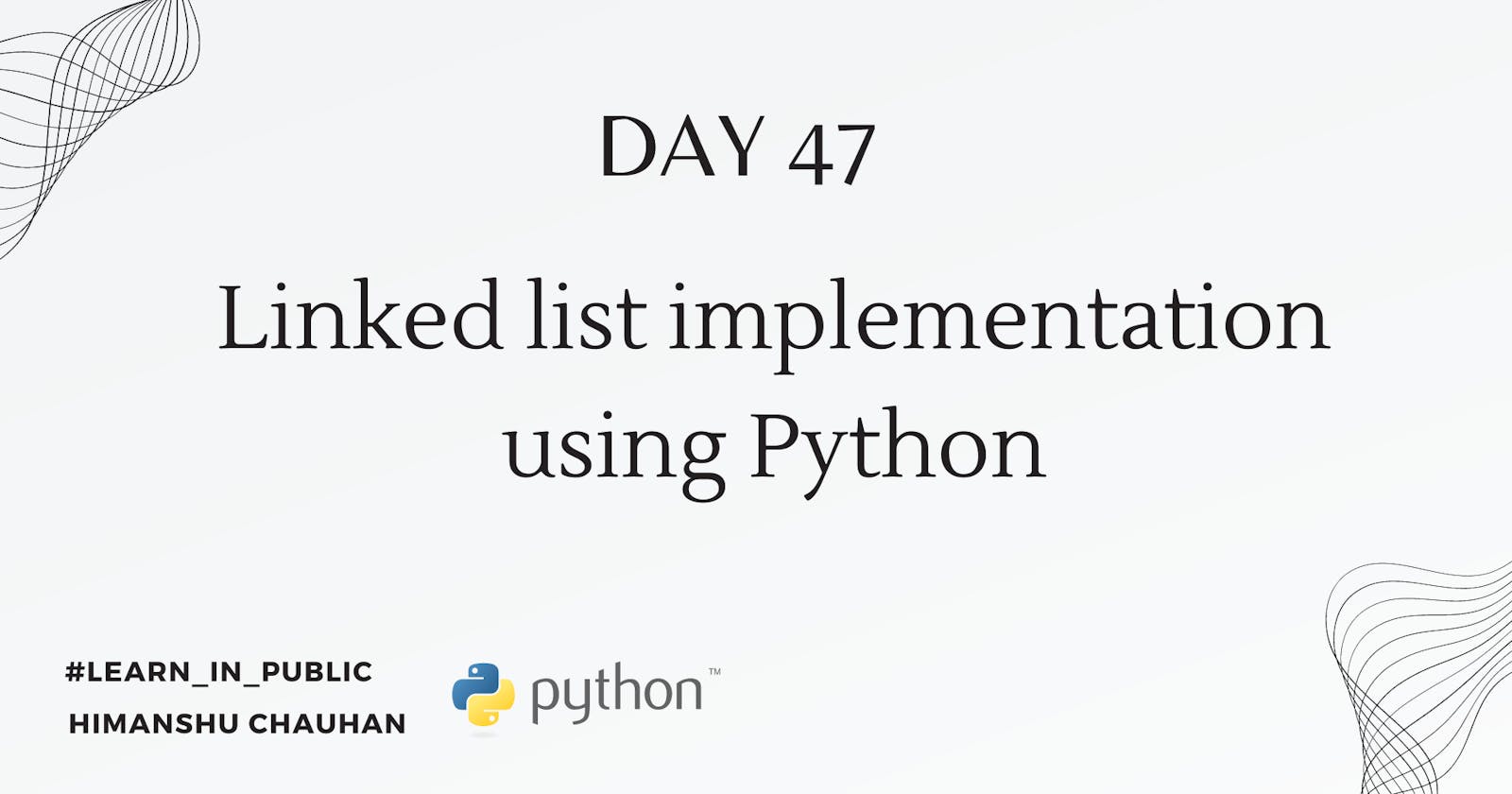Welcome back to the Python Learning Series! Today marks the forty-sixth day of our journey, and we're diving into the fascinating world of Linked Lists.
Introduction to Linked Lists
A Linked List is a fundamental data structure in computer science that consists of a sequence of elements, called nodes, where each node points to the next one in the sequence. Unlike arrays, which have contiguous memory allocation, linked lists use pointers to connect elements, allowing for dynamic memory allocation and flexibility in inserting and deleting elements.
Types of Linked Lists
There are several types of Linked Lists, including:
Singly Linked List: Each node points to the next node in the sequence.
Doubly Linked List: Each node has pointers to both the next and previous nodes.
Circular Linked List: The last node points back to the first node, forming a circular structure.
In this blog, we'll focus on implementing a basic Singly Linked List in Python.
Implementing a Singly Linked List in Python
pythonCopy codeclass Node:
def __init__(self, data=None):
self.data = data
self.next = None
class LinkedList:
def __init__(self):
self.head = None
def append(self, data):
new_node = Node(data)
if self.head is None:
self.head = new_node
return
last_node = self.head
while last_node.next:
last_node = last_node.next
last_node.next = new_node
def prepend(self, data):
new_node = Node(data)
new_node.next = self.head
self.head = new_node
def delete(self, key):
current_node = self.head
if current_node and current_node.data == key:
self.head = current_node.next
current_node = None
return
prev_node = None
while current_node and current_node.data != key:
prev_node = current_node
current_node = current_node.next
if current_node is None:
return
prev_node.next = current_node.next
current_node = None
def print_list(self):
current_node = self.head
while current_node:
print(current_node.data, end=" ")
current_node = current_node.next
print()
Conclusion
In conclusion, we've explored the concept of Linked Lists in Python. Linked Lists offer dynamic memory allocation and efficient insertion/deletion operations compared to arrays. We've implemented a basic version of a Singly Linked List, including methods like appending, prepending, and deleting nodes. Linked Lists are powerful data structures worth mastering for various programming tasks.
Thank you💕💕
